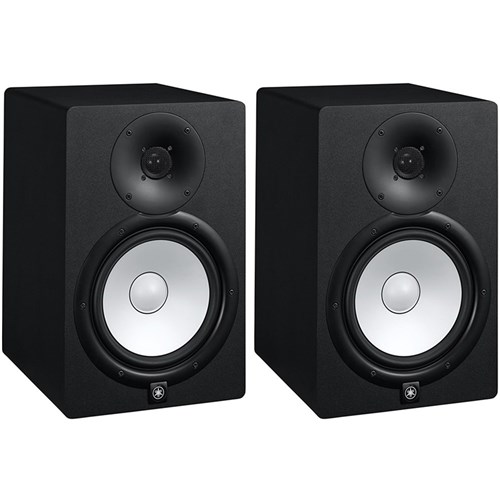What are studio monitors?
They’re also sometimes called reference speakers or loudspeakers. They are speakers designed for monitoring mixes of songs, instruments, vocals, and perhaps voice-work. What makes them different from entertainment speakers is that they are more balanced and flat. Regular speakers often have exaggerated bass, which make them good for entertainment, but studio monitors have a near-equal amount of bass, mid and high frequency so you can hear the content exactly for what it is. Studio monitors are designed to reveal imperfections in a recording so the artist or audio engineer can improve upon them.
Can’t I just mix in headphones?
For lower budgets, <$200 or less, headphones offer far more bang for buck. Though, at $300 and above, speakers really shine. Studio monitors require a good monitoring environment. If your recording environment doesn’t already have sound dampening material, you are better off with headphones.
Can studio monitors be used for entertainment as well?
Absolutely. High-quality audio is good in any event, especially for those that don’t want very high amount of bass. Even for those who do, there are EQ programs for Windows and Mac that can add bass, or whichever frequencies you are looking for.
Difference between sizes of studio monitors (i.e. 3″, 5″ and 8″)
The inches measure the diameter of the round woofer on the speaker. Larger sized monitors offer more bass and more overall projection than smaller ones. The size of the monitor also depends on the size of the room. 8″ monitors are good for large rooms such as a basement, but may be overkill for small rooms such as a bedroom or office room. Those recording in a small-ish room may be fine with 3″, though 5″ is recommended if they want the best quality.
If I buy small monitors with too low bass, can I just add on a sub-woofer later?
Yes, though sub-woofers may possibly over-compensate and add too much bass.
Are smaller studio monitors going to be loud enough?
Yes. Even small monitors put out a lot of volume. Most people would annoy their roommates and neighbors with the volume turned all the way up anyway.
Can I use just one studio monitor?
If the audio content is in mono and not stereo, yes. Otherwise, you’d only be getting the left or right side. Overall, it’s much more recommended to have a pair rather than just one, though some people on a limited budget may prefer to buy one great monitor rather than a pair of decent ones because they can always get the other one later.
What’s the minimum I should spend on studio monitors?
$100 if you want something decent. $300 if you want something good. Plus the cost of at least some treatment. Again, if budget is tight, headphones like the AKG K240 and ATH-M40x
Will I regret buying $100 entry-level monitors?
$100 monitors like the Presonus Eris and Mackie’s offer a good value for their price and are better than most speakers out there. They’re a good place to get started if you just want decent speakers and budget is very limited. In the long-run, if you are doing it as a passion or a profession, you will definitely find them inferior in quality.
Why should I buy ~$300 mid-range monitors?
If you are doing it as a passion or career, you’ll want to go in the mid-range. Rockit 5’s, Yamaha HS- series, M-Audio BX series and JBL LSR305 are the best place to start. As you get further along into mixing, entry-level monitors will just not offer the clarity you are looking for, but mid-range monitors will never be bad.
What should I do if I have no budget for monitoring gear at the moment?
Listen to mixes in your car’s stereo (seriously).
